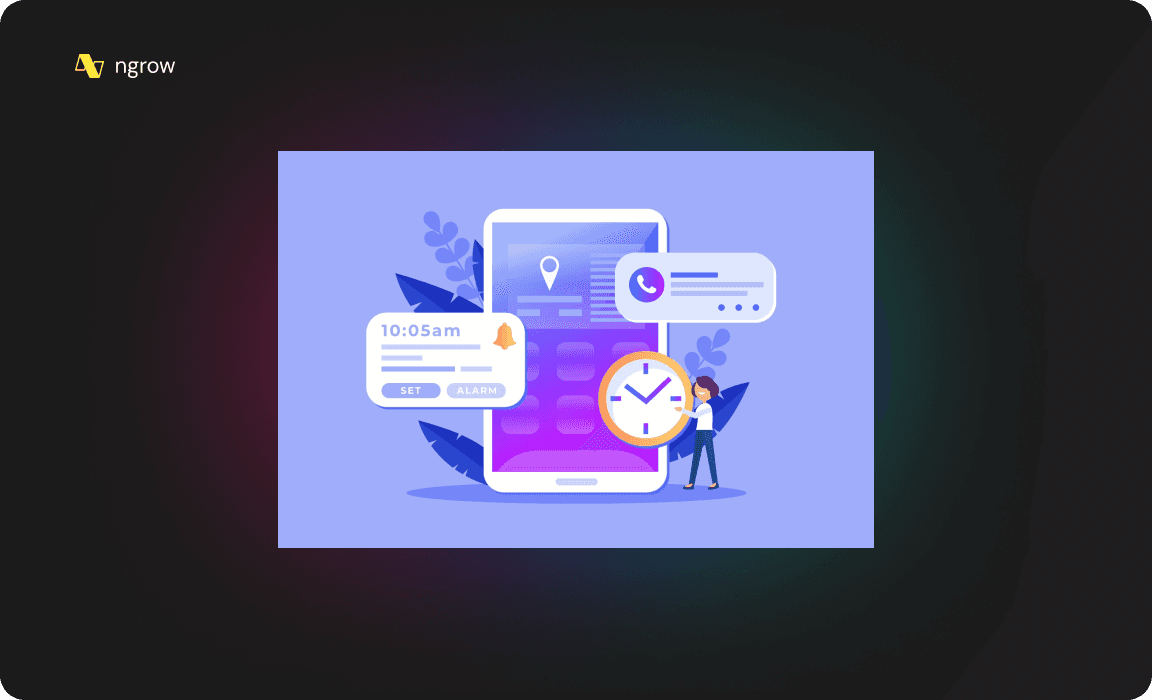2
min to read
Apr 19, 2024

Predictive analytics is the process of using statistical models, machine learning, and data mining techniques to analyze historical data and make predictions about future events or behaviors. In the context of push notification marketing, predictive analytics can help businesses identify patterns, trends, and user preferences, allowing them to tailor their push notification strategies for maximum impact.
Benefits of Predictive Analytics in Push Notification Marketing

Personalized Messaging: By analyzing user data and behavior, businesses can create push notifications that are tailored to individual preferences, increasing the likelihood of engagement and conversion.
Improved Timing and Delivery: Predictive analytics can help businesses determine the optimal timing and frequency of push notifications, ensuring that they reach users when they are most receptive and engaged.
Enhanced User Experience: Personalized and well-timed push notifications create a more seamless and enjoyable user experience, leading to higher satisfaction and retention rates.
Increased Conversions: Targeted and relevant push notifications can drive users to take desired actions, such as making a purchase or signing up for a service, ultimately boosting conversions.
Reduced Opt-Out Rates: Relevant and non-intrusive push notifications are less likely to be perceived as spam, leading to lower opt-out rates and stronger user engagement.
Predictive Analytics Techniques in Push Notification Marketing
Behavioral Segmentation: Analyze user behavior, such as app usage patterns, in-app interactions, and purchase history, to segment users into distinct groups based on their preferences and behaviors.
Predictive Churn Modeling: Use machine learning algorithms to identify users who are at risk of churning or disengaging, and send targeted push notifications to re-engage them.
Predictive Lifetime Value (LTV): Estimate the potential lifetime value of users and prioritize push notification strategies to target high-value customers.
Predictive Recommendations: Leverage user data and machine learning to provide personalized product or content recommendations through push notifications, increasing the likelihood of conversions.
Predictive Timing: Analyze user engagement patterns and device usage data to determine the optimal time to send push notifications, ensuring maximum visibility and impact.
Case Studies
1. Starbucks
Starbucks leverages predictive analytics to deliver personalized push notifications to its mobile app users. By analyzing user data, such as purchase history, location, and preferences, Starbucks can send targeted offers, product recommendations, and promotional messages that resonate with individual customers, leading to increased engagement and sales.
2. Duolingo
Duolingo, the language learning app, uses predictive analytics to optimize its push notification strategy. By analyzing user behavior and engagement patterns, Duolingo can determine the optimal time and frequency to send push notifications, encouraging users to continue their language learning journey and maintain their daily practice.
Challenges and Considerations
Data Quality and Availability: Accurate and comprehensive user data is essential for effective predictive analytics. Businesses must ensure that they have the necessary data infrastructure and data governance practices in place to collect, store, and analyze user information securely and ethically.
Model Complexity and Interpretability: Developing and deploying predictive models for push notification marketing can be a complex and resource-intensive process. Businesses must balance the accuracy and sophistication of their models with the need for interpretability and explainability, ensuring that the underlying logic and decision-making process are transparent and understandable.
Privacy and Regulatory Compliance: As businesses leverage user data for predictive analytics, they must be mindful of data privacy regulations, such as the General Data Protection Regulation (GDPR) and the California Consumer Privacy Act (CCPA). Ensuring compliance with these regulations is crucial to maintain user trust and avoid legal and reputational risks.
Continuous Optimization: Predictive analytics in push notification marketing is an ongoing process that requires continuous monitoring, testing, and optimization. Businesses must be prepared to adapt their models and strategies as user behavior and market conditions evolve over time.
Best Practices for Implementing Predictive Analytics in Push Notification Marketing
Establish a Robust Data Infrastructure: Invest in the necessary data collection, storage, and processing capabilities to ensure the availability of high-quality user data for predictive analytics.
Adopt a Holistic Approach: Integrate predictive analytics into a broader push notification strategy that considers user preferences, device usage, and other relevant factors to deliver a seamless and personalized experience.
Continuously Test and Optimize: Regularly test and refine your predictive models and push notification strategies, using A/B testing and other techniques to identify the most effective approaches.
Ensure Ethical and Responsible Data Usage: Prioritize user privacy and data security, and adhere to relevant data protection regulations to build trust and maintain a positive brand reputation.
Collaborate with Data Science and Analytics Experts: Leverage the expertise of data scientists, analysts, and marketing professionals to develop and implement effective predictive analytics strategies for push notification marketing.
Conclusion
Predictive analytics has the potential to revolutionize push notification marketing, enabling businesses to deliver personalized, timely, and highly relevant messages that resonate with their target audience. By leveraging data-driven insights and advanced algorithms, businesses can create push notification strategies that drive user engagement, increase conversions, and foster long-term customer loyalty. As the digital landscape continues to evolve, the strategic integration of predictive analytics into push notification marketing will become increasingly crucial for businesses seeking to stay ahead of the competition and deliver exceptional user experiences.



